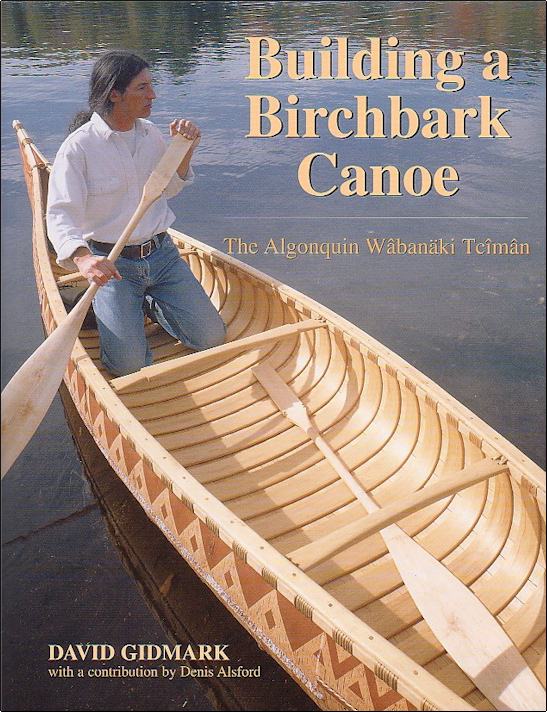Review by Mike Saunders
no1likhim@knology.net Shooting a rapid with flung arrows
flying past and war whoops echoing around. Traversing long rivers clad in
buckskin. Easing along looking ahead for trout to spear. These are some of
the thoughts that come to mind as you think of a birchbark canoe. Every
once in a while, someone comes along and seemingly resurrects a “lost”
art. This is one of those cases.
“Building a Birchbark Canoe” delves into not only the methods of
construction, but also the history of canoeing by the Algonquin Indians of
the northeast. The first chapter is a fairly exhaustive account of how
birchbark canoes came into being. Not only is the reader brought to
understand canoe building, but also a lesson in how to “take what you have
on hand, and make what you can”.
The following chapters are divided with General construction techniques
first, and then four different builders actually build a canoe. The
pictorial documentation is wonderful. Photographs of the process abound,
but also a personal touch is there as you learn not only the methods that
the builders use, but also learn about the builders.
The book is an easy read. David Gidmark writes the majority of it in a
manner that makes you feel as if you were there asking the questions
yourself. To be able to blend such an amount of technical material in a
manner that doesn’t cause drowsiness is an indication of good writing.
The final chapter deals with a subject that most boatbuilders will
appreciate. Making a paddle. The method used is strictly traditional and
in keeping with the rest of the book. A portion of the chapter is also
devoted to making your own “crooked Knife”, an essential tool if you ever
decide to venture into the world of birchbark canoe building.
My final recommendations: Want to build a canoe? Read this book first. It
may change your mind about the type of construction you choose.
Mike Saunders

|